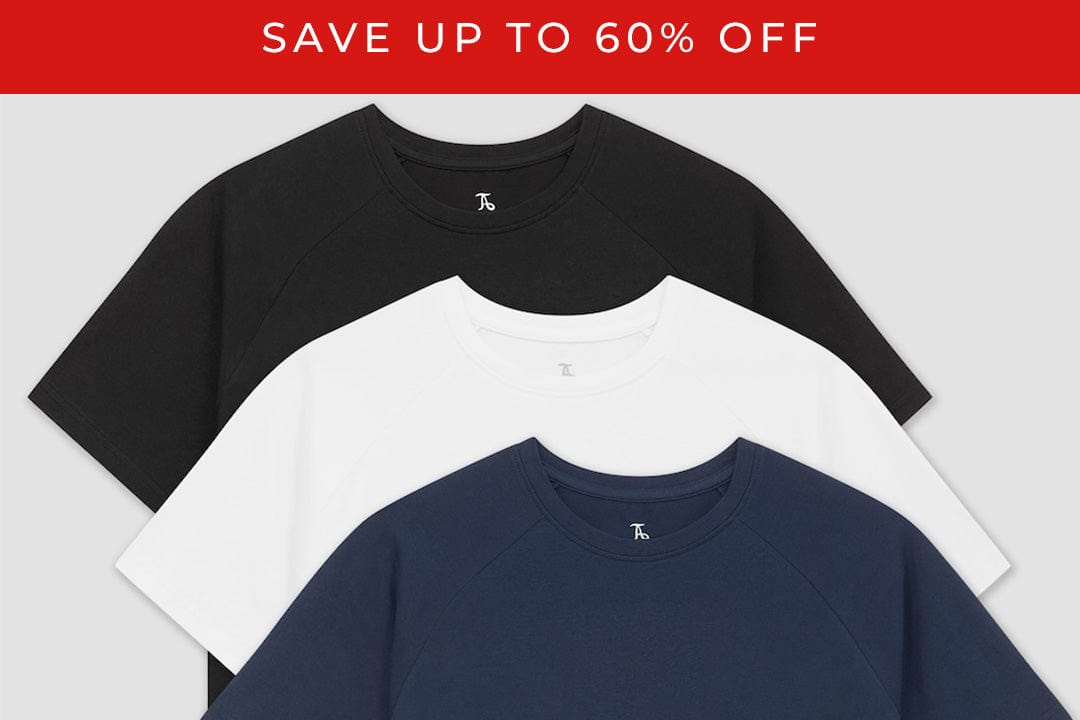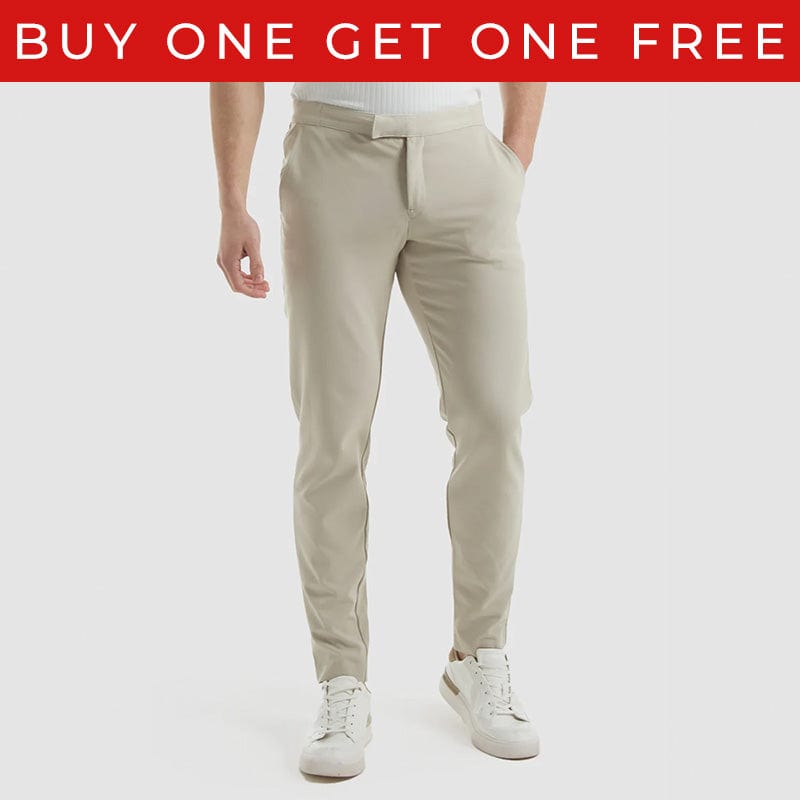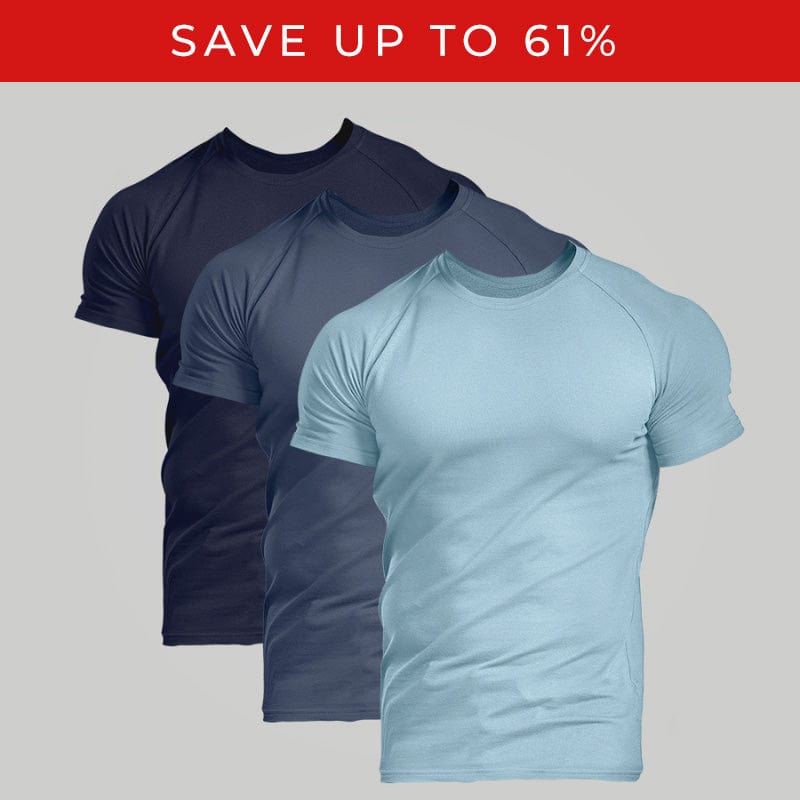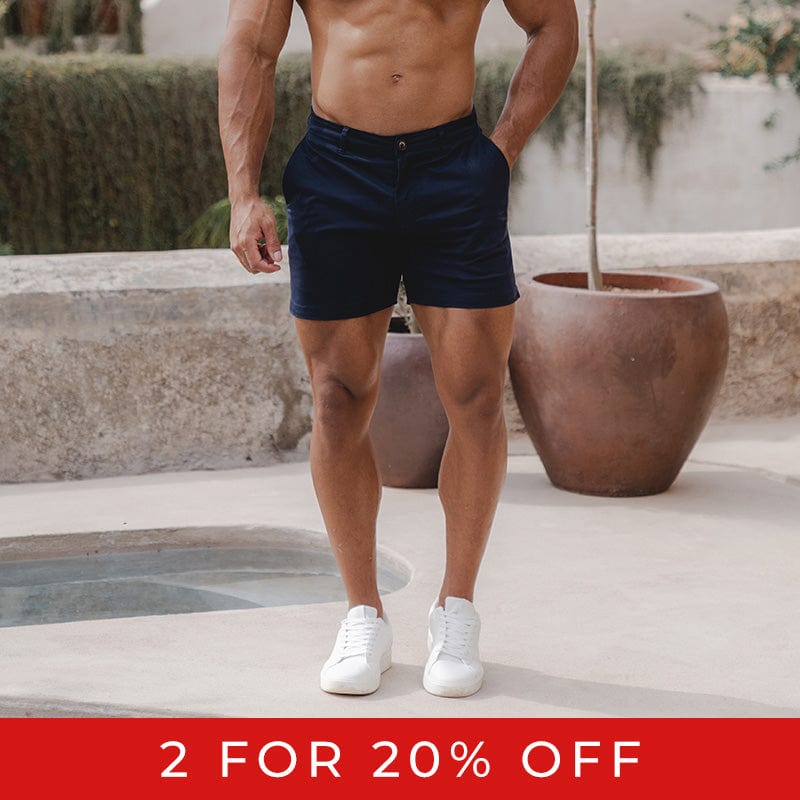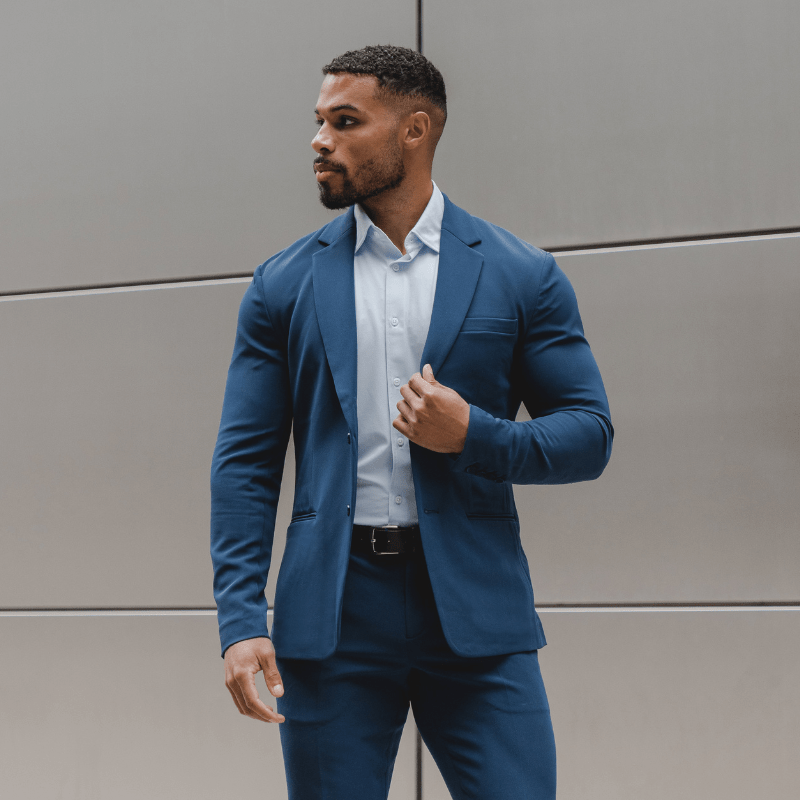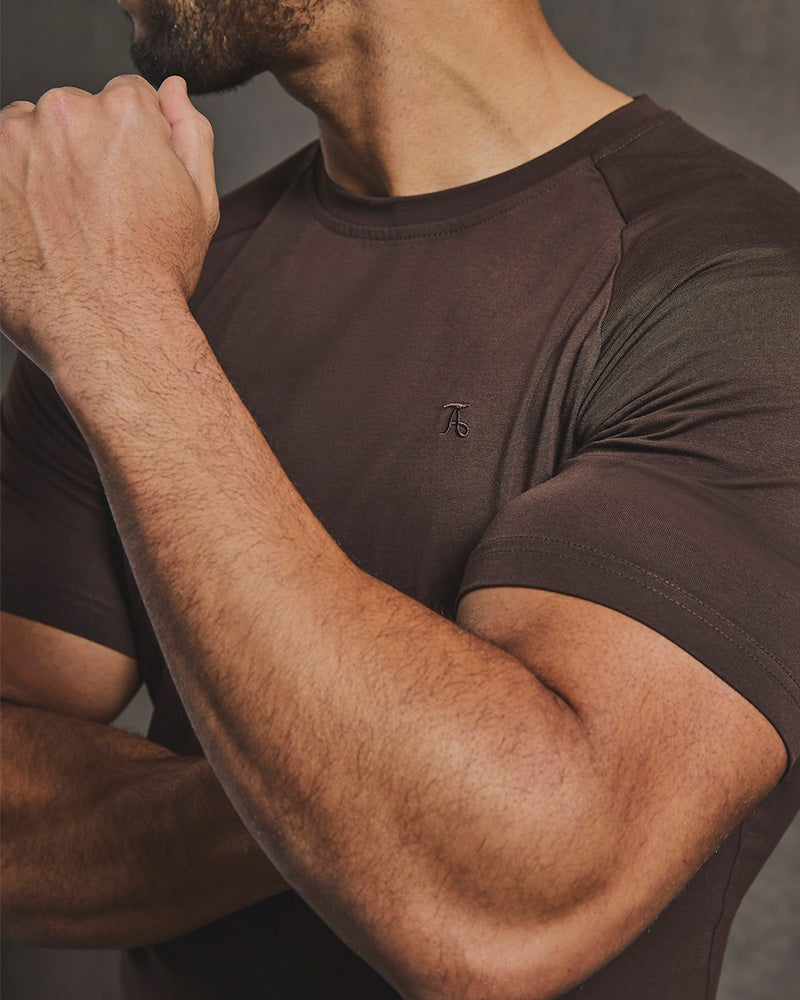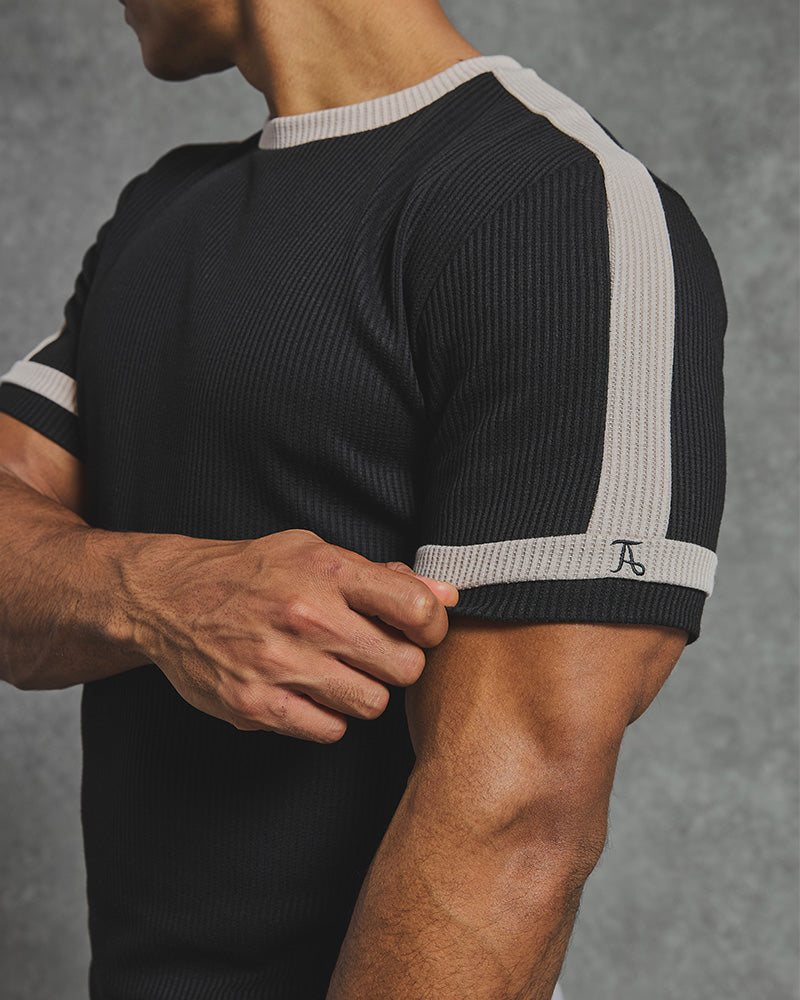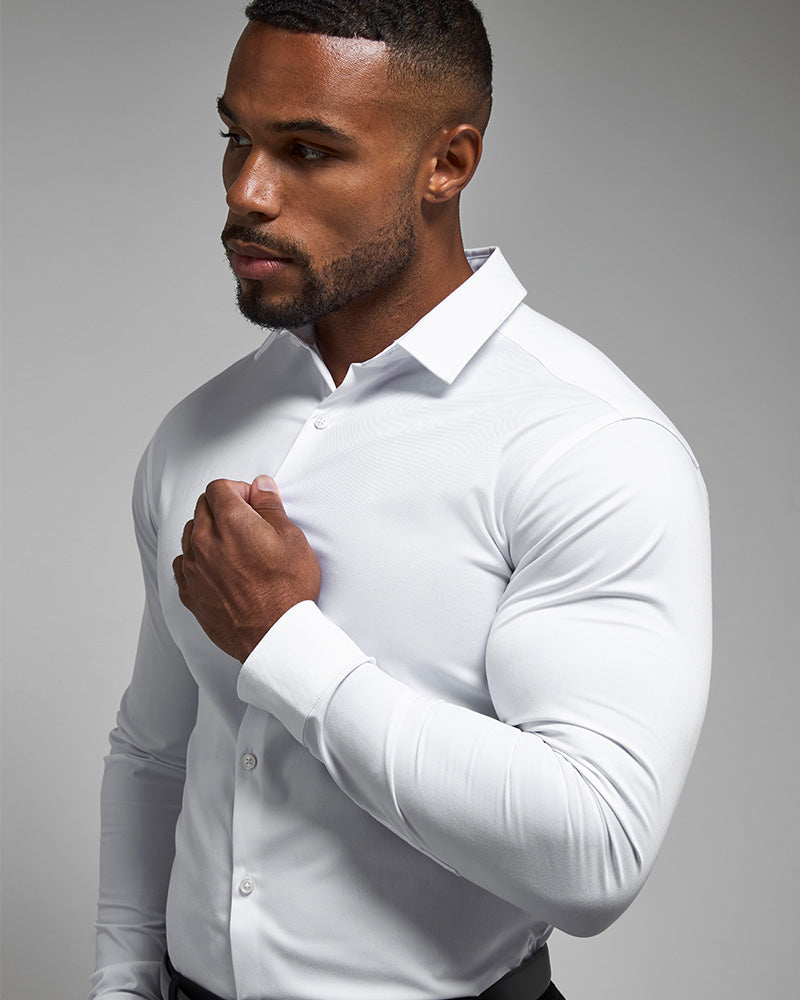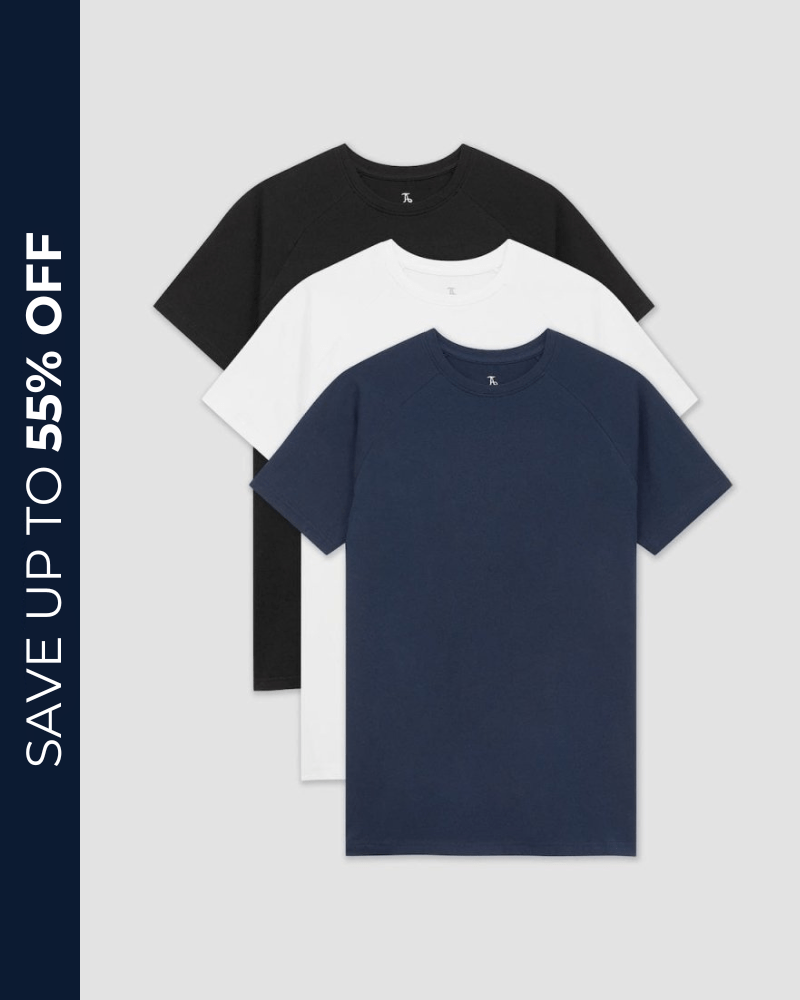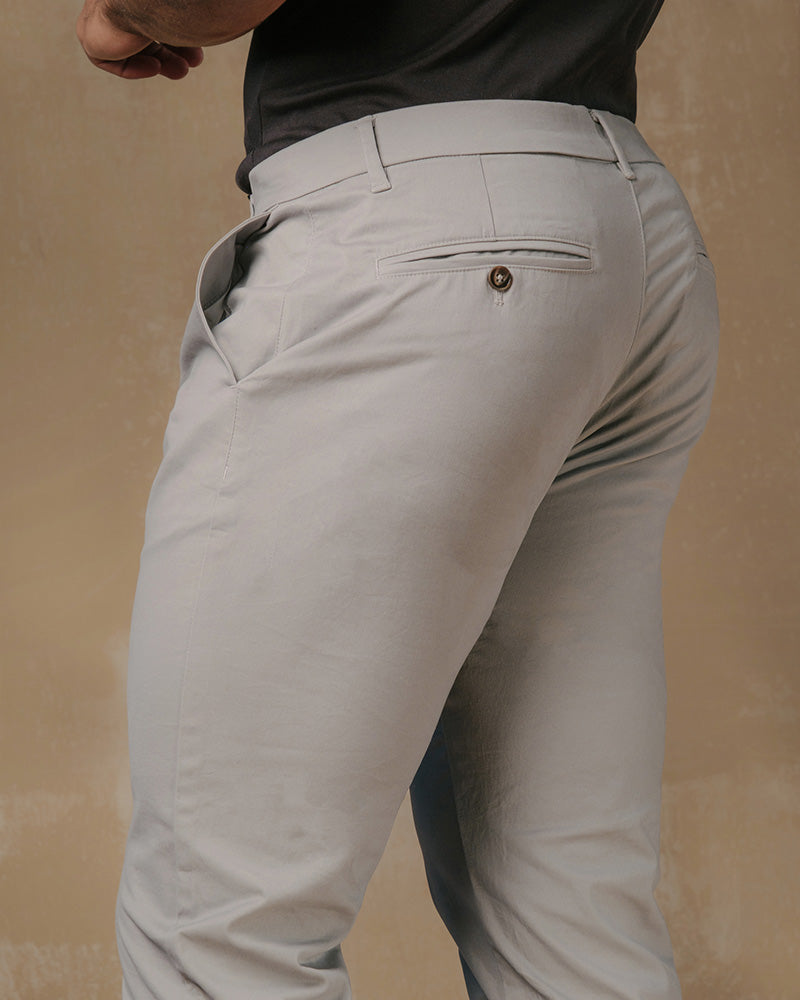FREE SHIPPING $175+
35 DAYS EASY RETURNS
Menu
- Mens
- New In
- New In
- Last Chance Sale
- clothing
- Luxe Sweat Collection
- The Merino Shop
- BUNDLES
- Shop By Occasion
- Size Guides
Free Shipping
Orders $175+35-Day
Easy ReturnsGuaranteed
Perfect Fit
FREE SHIPPING $175+
35 DAYS EASY RETURNS

Straight Fit vs Relaxed Fit
October 07, 2022 5 min read
One is formal and stylish, while the other is baggy and comfortable.
When pinning straight fit and relaxed fit up against each other, can there be one clear winner?
Who takes the crown in a match between straight fit and relaxed fit, and what exactly does each contender bring to the table?
While these discussions can be interesting mental exercises, in the real world you want to find something comfortable, designed for you and that makes you look good. Sadly, if you’ve got more muscle mass than the average person, neither of these choices are going to be good options.
Stick around, though, and we’ll show you why the real winner is TAILORED ATHLETE’s True Muscle Fit.
What this article covers:
- What Is a Straight Fit?
- What Is a Relaxed Fit?
- Comparing the Two
- When Straight and Relaxed Fits Don’t Work
What Is a Straight Fit?
Straight fit is a style that adopts traits from the tailored look, so when comparing tailored fit vs slim fits, the two share a lot of similarities.
What makes this style so like a tailored fit is how it sits on the body. If you’re wearing straight-fit pants or shirts, they sit closer to the body as they are more narrow by design.
In pants, certain areas are wider and are catered towards those with larger thighs.
However, most people agree that straight-fit clothing is ideal for bridging the gap between smart and casual.
The word ‘straight’ refers to the cut from the hip down to the ankle. The fabric is cut in a straight line, describing the silhouette of the fabric.
A straight fit has a 10 to 11-inch diameter leg opening with a mid-to-high rise.
Because straight fit clothes are cut with an average build in mind, they don’t really work for athletes. The tapering around the seams can cut into your skin which leads to a host of problems. For one, you’re far more likely to break the clothes around the seams if you fill them out too much.
Straight Fit Shirts
The logic behind straight-fit pants also applies to shirts. They’re cut straight are fit snugly around the chest and arms while still giving them room to breathe.
These shirts tend to be baggy around the waist, with no tapering so will need to be tucked in.
Straight fit shirts are likely to be far too tight around your armpits and tight around your shoulders. There can also be some creasing across your chest that makes you look like you’re wearing a shirt that’s two sizes too small.
Instead, you can go for TAILORED ATHLETE’s True Muscle Fit shirts. Slim fit shirts are made to be boxy by design, whereas ours follow the natural contours of an athlete’s muscles. You don’t have to size up your clothes just to get something that fits.

What Is a Relaxed Fit?
If we look at relaxed-fit pants and jeans, they’re looser than regular ones.
They give you extra leg room in the seat, crotch, and thigh region.
Relaxed-fit jeans were quite popular in the 90s as baggy clothing was hip at the time. However, as with most trends, there seems to be a revival.
Relaxed clothing isn’t necessarily classified as being baggy as that is a style on its own. Instead relaxed fit bridges the gap between regular and baggy fit.
For those who want to wear jeans at work but don’t want skintight clothing, you should go for relaxed-fit jeans.
If you have bigger hips and thighs, wearing skinny jeans or a similar tight-fitting cut will be uncomfortable.
Relaxed-fit jeans are going to make for a more comfortable fit than slim fit ones, but they’re going too far in the other direction.
Because they’re so much looser, they don’t show off any definition in the body. If you’ve got a narrow waist and sculpted calves, they’re going to disappear beneath the slack denim.
Relaxed Shirts
Again, if someone is describing the fit of jeans, the same logic applies to their respective shirts and T-shirts.
A relaxed shirt doesn’t hug your body. It allows you to move freely and is made from a lighter fabric when compared to the straight fit.
A relaxed-fit shirt won’t look professional. Instead, it prioritizes feeling comfortable.
However, if you want to wear a shirt and jeans in the workplace, especially in an environment where you’re moving around a lot, then being relaxed is the way to go.
Comparing the Two
Both styles are appropriate for various reasons, so there won’t be a standout winner between the two.
Straight fit is ideal for those with pear, apple, or hourglass-shaped bodies, but they tend to be too constricting on bulkier frames.
The relaxed fit, whether we’re talking about shirts or jeans, focuses more on comfort than looking professional.
This clothing is one level down from the baggiest style you can get, so expect a large amount of leg room and not much in the way of form-fitting garments.
These designs prioritize average builds and tend to exclude athletes and bodybuilders.
If you want something comfortable and attractice, True Muscle Fit is the only thing for you.
If you’d like to know more about the various cuts of clothes, such as the difference between slim and extreme slim fits, check out our blog section.
When Straight and Relaxed Fits Don’t Work
Athletes want to wear clothing that cuts closer to the body without feeling suffocated. If you want to show off the body that you’ve worked so hard for, you’re not going to want to wear clothes that don’t contour around you.
So a pair of ourmen's athletic fit jeans or a shirt that uses premium material to allow you to move freely while looking stylish is the way to go. This is where TAILORED ATHLETE comes in. We use moisture-wicking 4-way stretch material that hugs your body without smothering you.
Muscle fit means the clothes wrap around your arms, chest, and legs, but all too often muscle fit clothes are uncomfortable. This is why TAILORED ATHLETE makes “true muscle-fit” clothes to keep you looking good without sacrificing quality or comfort.
Did you find our blog helpful? Then consider checking:
- Straight vs Regular Fit: Which Is Best for Your Body?
- Regular Fit vs Relaxed Fit: Major Differences
- Relaxed Fit vs Loose Fit: Everything You Need to Know
- Classic Fit vs Regular Fit (Differences + When to Wear)
- Slim Fit vs Athletic Fit - a Battle of the Styles
- Slim Fit vs Regular Fit: Breaking Down the Clothing Fits
- Slim Fit vs Fitted: Who Are They for?
- Trim Fit vs Slim Fit: How Are They Different?
- Slim Fit vs Classic Fit (How to Choose Your Best Fit)
- Contemporary vs Slim Fit: Which Is for Me?
- Sharp fit vs slim fit (Differences + Who should wear it)
- Modern Fit vs Slim Fit - which fit is right for your body?
- Slim vs Skinny Fit: Is There Even a Difference?
- Traditional Fit vs Tailored Fit (Fashion Guide)
- Slim Fit vs Extra Slim Fit: Is It for Me?
Leave a comment
Comments will be approved before showing up.

